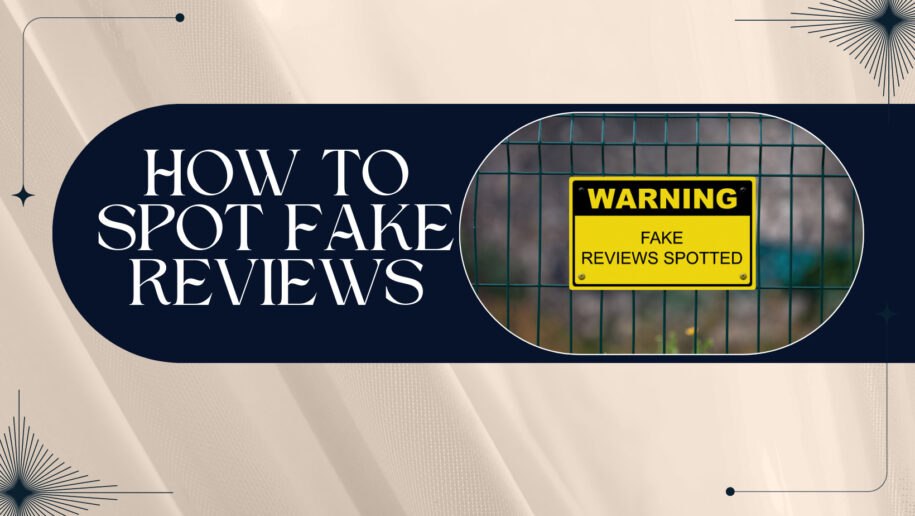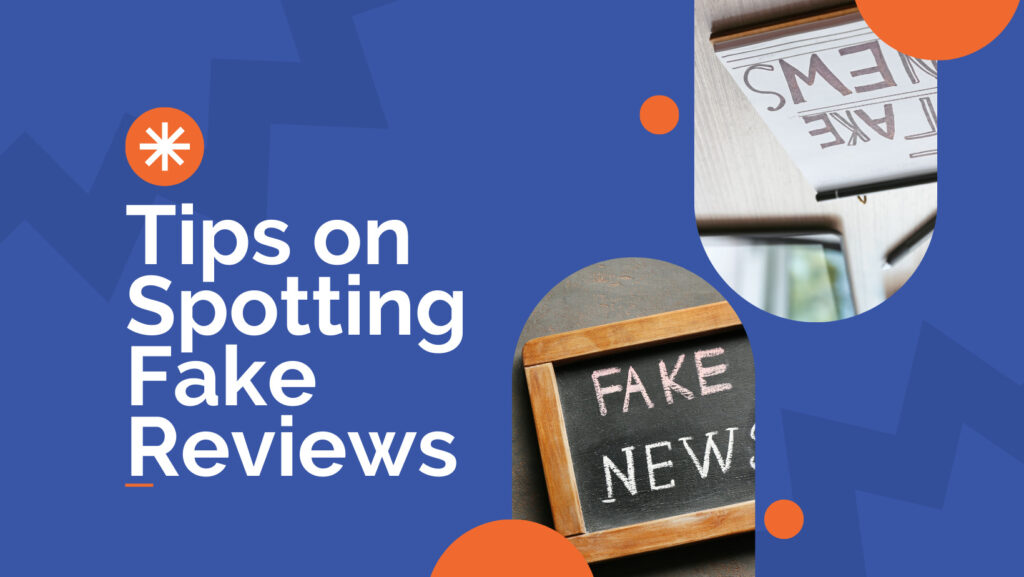The advent of online shopping has turned customer reviews into a cornerstone of decision-making for consumers. Unfortunately, it has also ushered in an era of fake reviews. Knowing how to spot fake reviews is therefore crucial to ensure you are making informed purchasing decisions.
Understanding the Nature of Fake Reviews
Fake reviews, often written by hired freelancers, bots, or sometimes even by the companies themselves, are designed to artificially inflate a product or service’s reputation. They can either unjustly promote a product or unjustifiably slander a competitor’s offering. Spotting fake reviews can be tricky, as they are deliberately written to look authentic.
Spotting Fake Positive Reviews
Knowing how to spot fake reviews often starts with discerning fake positive reviews. Here are a few signs to look out for:
- Generic Praise: Fake reviews may be filled with general compliments such as “great product” or “loved it,” but lack any specific details about the product or the user’s experience.
- Excessive Adjectives and Superlatives: Overly enthusiastic language and multiple exclamation marks can be a sign of insincerity. Genuine customers are usually more reserved and balanced in their praises.
- Multiple Reviews from the Same User: If you find numerous reviews from a single user, all with similar language and all posted in a short timeframe, they might be fake.
- A Surge of Positive Reviews: If there’s a sudden flood of overly positive reviews within a short period, it’s a clear red flag. Genuine reviews typically trickle in over time.
Spotting Fake Negative Reviews
Spotting fake negative reviews is as important as identifying fake positive ones. They can be a part of a sabotage campaign against a business. Watch out for these signs:
- Vague Criticisms: Like fake positive reviews, fake negative reviews often lack details. They use generic language like “terrible product” without explaining why.
- Extreme Language: Fake reviews tend to use extreme language to instill a sense of urgency or fear in the reader. Real customers usually give a balanced account of their experience.
- Timing of the Review: If a product gets a surge of negative reviews in a short period, especially at its launch, these could be fake, aimed to tarnish its reputation.
Tools and Websites to Help You Spot Fake Reviews
There are several websites and software that can help you spot fake reviews. These include Fakespot, ReviewMeta, and Trustpilot. They use algorithms to analyze reviews and flag potential fakes. However, while they are useful, they aren’t foolproof, so understanding how to spot fake reviews manually remains essential.
The Role of Common Sense
In addition to these tips, common sense plays an invaluable role in distinguishing real from fake. If a review seems too good to be true or overly dramatic, it probably is. Trust your gut instinct when things don’t add up, and always read multiple reviews to get a balanced view.
Additional Tips on Spotting Fake Reviews
While the initial signs may be clear, some fake reviews are more sophisticated and require deeper investigation. Here are some extra tips to help you spot these cleverly disguised impostors.
Reviewer’s Profile and History
One effective way to identify fake reviews is to examine the reviewer’s profile and review history.
- Profile Creation Date: If a profile was recently created and has posted multiple reviews in a short time, it could be a red flag.
- Review Frequency: Genuine users usually don’t review products every single day. If you spot daily reviews from the same user, be suspicious.
- Geographic Consistency: Be wary of reviewers who post about businesses located in different countries or states within a short timeframe.
Language and Writing Style
- Overly Formal Language: If the review uses formal or complex language, it might be professionally written. Genuine reviews are usually casual and written in simple, everyday language.
- Repetitive Mention of the Full Product Name: Normal customers will not repeat the complete product name multiple times. If a review does this, it might be trying to game SEO algorithms.
Conclusion:
In the digital age, where online shopping is predominant, discerning between genuine and fake reviews is key to making informed buying decisions. It’s essential to be vigilant for telltale signs like generic language, sudden review surges, and extreme wording. Tools like Fakespot, ReviewMeta, and buying Trustpilot reviews can aid this process, but they aren’t infallible. Thus, learning how to spot fake reviews and trusting your intuition when something doesn’t seem right remains invaluable. By applying these strategies, you can protect yourself from false advertising and ensure your purchases are backed by authentic customer experiences.
Become a savvy consumer: learn how to spot fake reviews and make informed decisions. Discover the key indicators and strategies to identify genuine feedback. Don’t be misled by false information. Take charge of your choices. Contact us to uncover the secrets of how to spot fake reviews and navigate the online landscape with confidence.


